Below are the updated MLS season forecasts using data from games through March 5, 2017.
Power Rankings
The “Power Rankings” we concoct are the “strength” of the team according to competitive expectations. They are computed by forecasting the expected points (3 x win-probability + 1 x draw-probability) against every MLS team, both home and away, and taking the average per team.
SEBA has the Union up to 15th from 19th.
MLSSoccer.com has Philadelphia down to 16th from 12th; ESPN has the Union down to 15th from 13th; Soccer America has the Union in 17th (no preseason rankings); SI has the Union down to 19th from 18th; and Goal has the Union remaining in 12th.
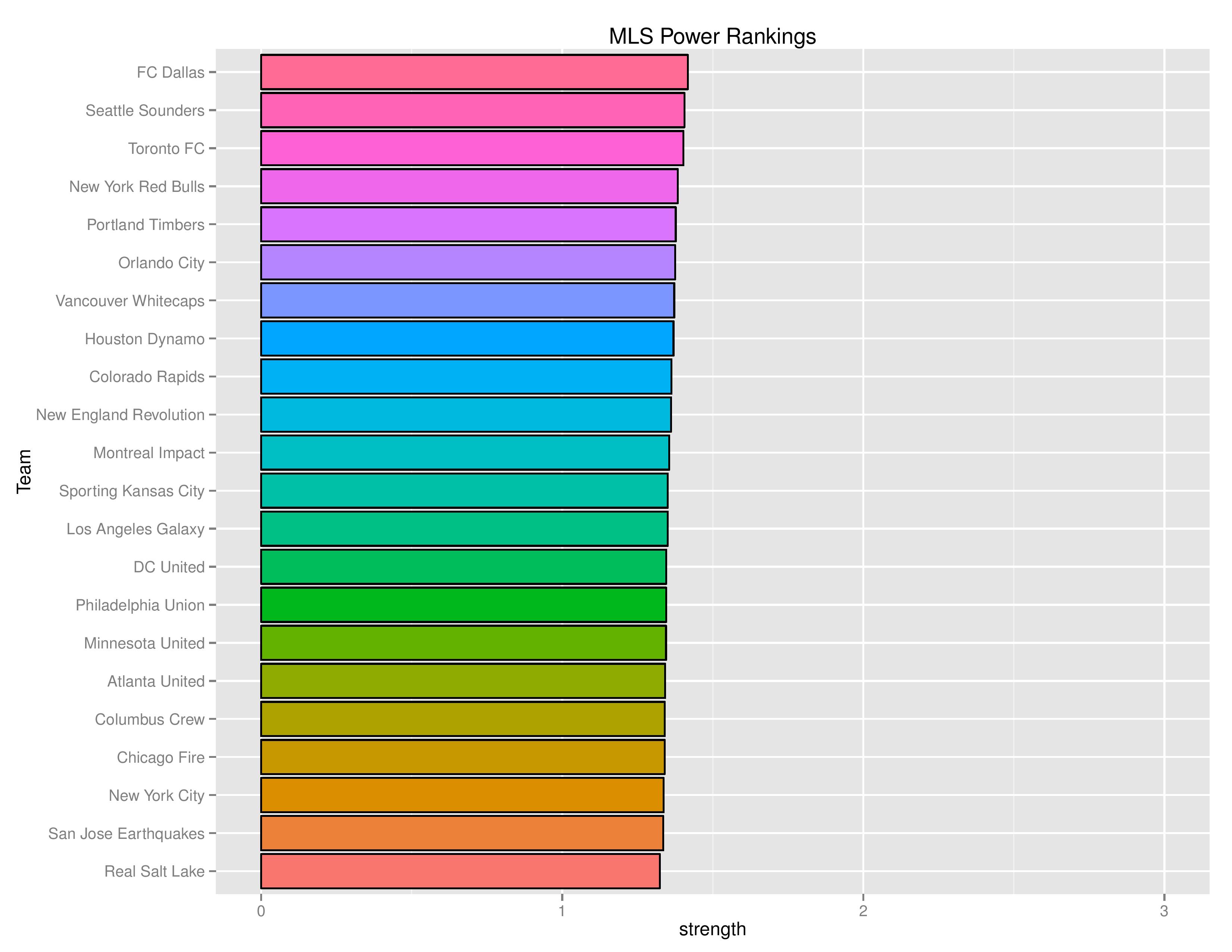
The following shows the evolution of SEBA’s power rankings for the MLS East over time.
Playoffs probability and more
Philadelphia’s odds improved to 54.0% from 51.4% for making the playoffs.

Philadelphia’s odds to win the Supporters’ Shield declined from 3.9% to 3.3%.
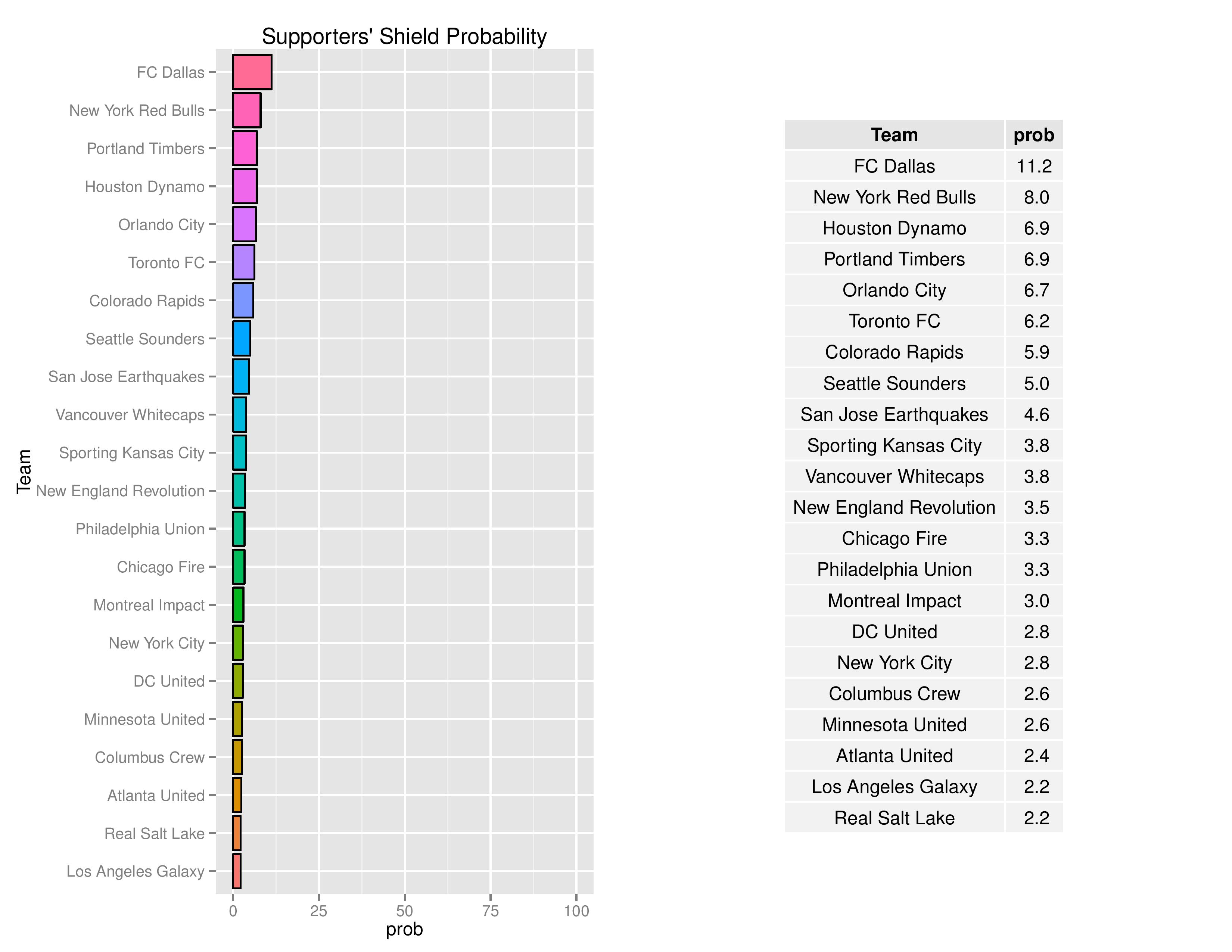
The Union’s chances of winning the MLS Cup increased from 3.9% to 4.1%.

Last week I almost correctly predicted the format of the U.S. Open Cup. I mistakenly thought that teams Reno 1868 and Saint Louis were MLS-controlled (making them ineligible for the USOC). Reno is only affiliated with San Jose, and Saint Louis is not even affiliated with Chicago as of 2017. Everything else remains the same as last week (with sub-USL/NASL clubs being randomly selected from last year’s sub-USL tournament clubs, as the early schedule is not easy to forecast).
Philadelphia increased its odds to win the U.S. Open Cup from 3.5% to 3.6%.
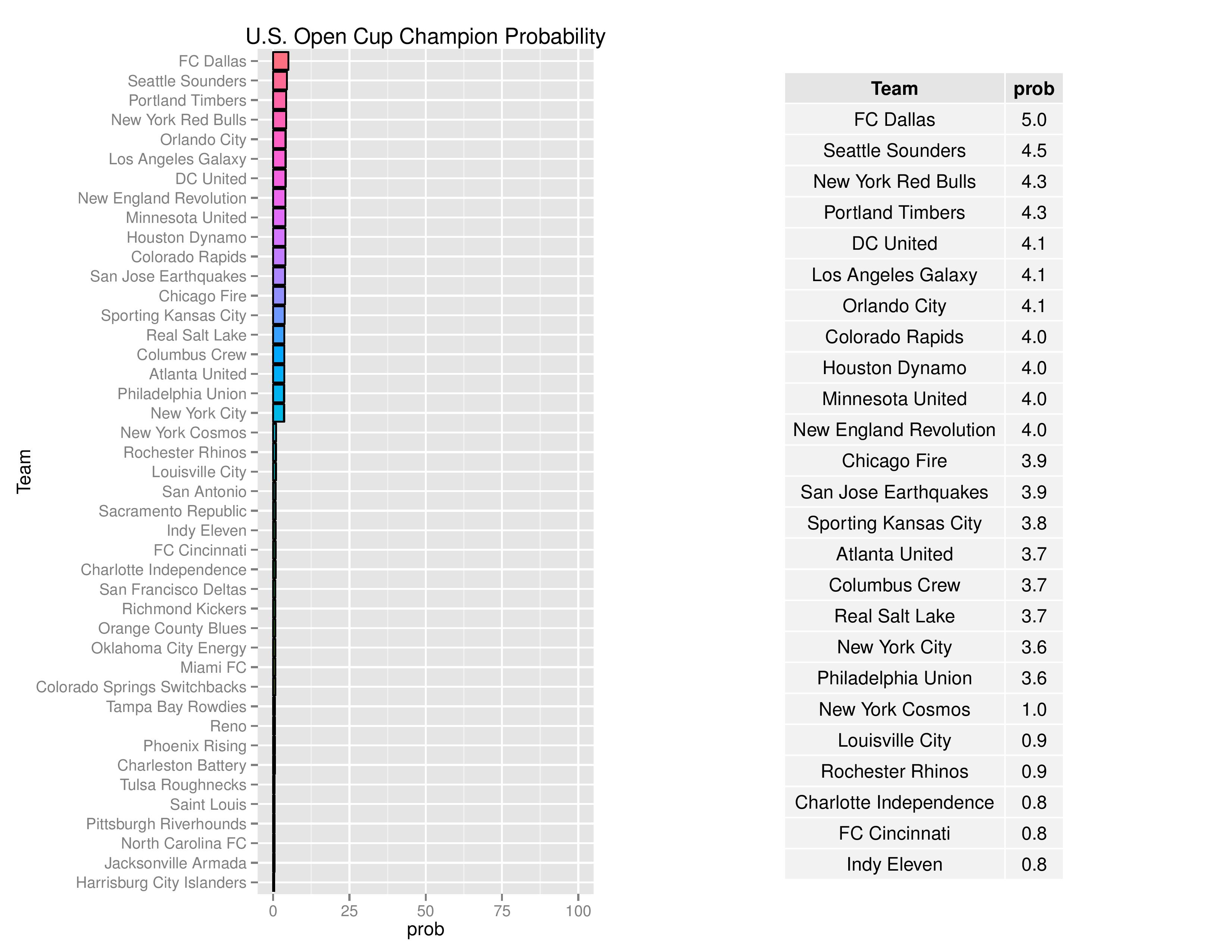

Philadelphia’s chances for qualifying for the 2018-2019 edition of the CONCACAF Champions League declined from 18.0% to 17.8%.

Over time, we can see how Philadelphia’s odds for different prizes change.
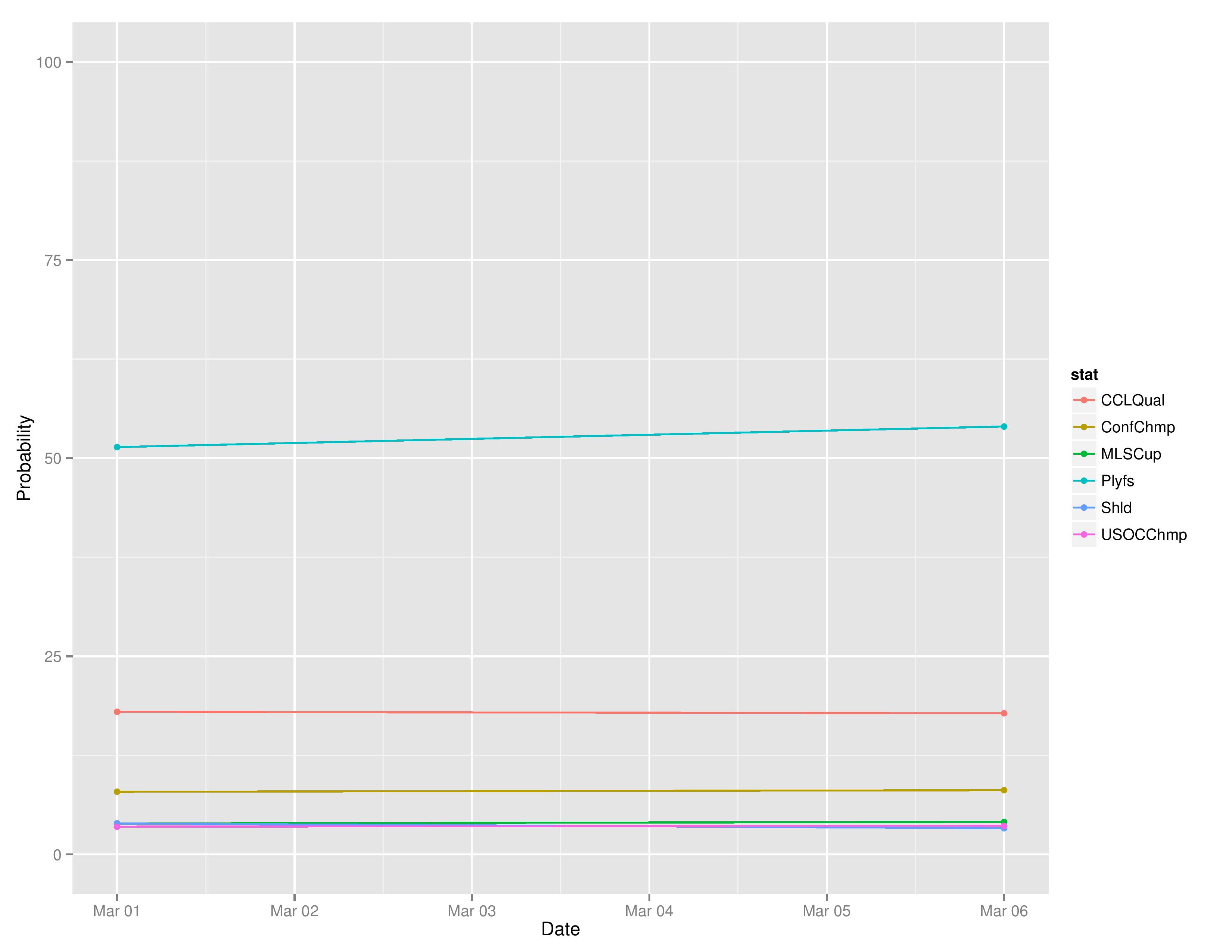
The following are probabilities for each category of outcomes for Philadelphia.

The following shows the relative probability of the prior categories. If the projection system were entirely random, these bars would be even, despite that “Missed Playoffs” is inherently 10 times as likely as “MLS Cup Champion.” This gives a sense of which direction the club is pushing towards.
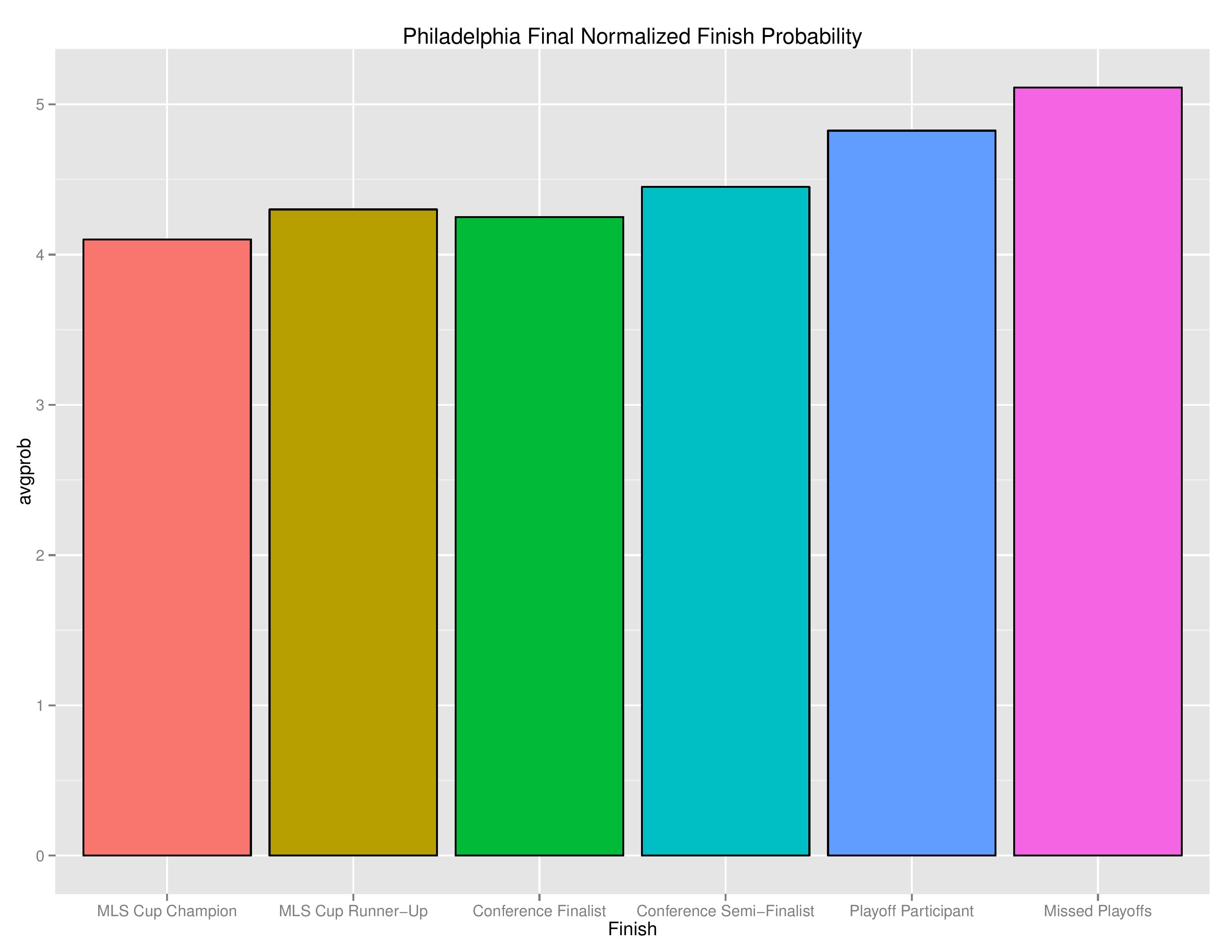
The following shows the probability of each post-playoff ranking finish.
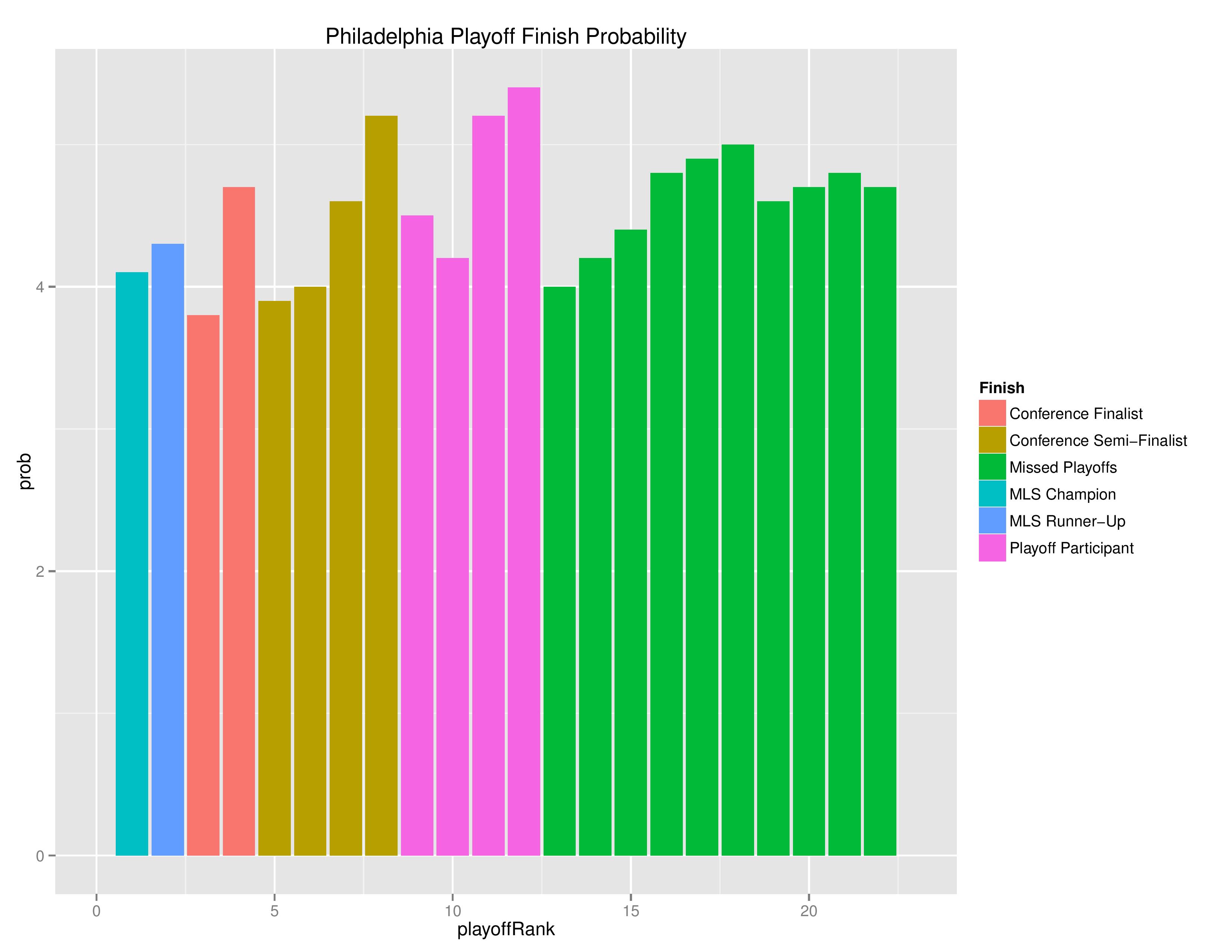
The following shows the summary of the simulations in an easy table format.
(Being expansion clubs, Minnesota’s and Atlanta’s goal data offer an extraordinarily small sample size and are therefore rather crazy at the moment. This will correct itself soon).
Additionally, you may be wondering why San Jose, currently judged by SEBA to be the 2nd-worst team in MLS, is expected to finish comparatively high. The reason comes down to two major factors:
- The model is still manually restrained from making conclusions that deviate far from the mean without an abundance of evidence. Therefore, on average, the points projections for all teams are very close.
- Combine the above with the fact that the 3 points gained by San Jose far outpaces the 1.56 points the model would have expected last week. The difference actually heavily influences ranking when you look at the average points expectations for all teams in this model.


As a new feature, we can also show how the Remaining Strength of Schedule affects each team.
The “Points Percentage Advantage” shown on the X-axis represents the percentage of points expected over the league average schedule. This “points expected” value is generated by simulating how all teams would perform with all remaining schedules (and therefore judges a schedule based upon how all teams would perform in that scenario).
In short, the higher the value, the easier the remaining schedule.
Philadelphia has one of the ‘easiest’ remaining schedules, in large part because they have one more home match than away matches remaining. It can also be true that a better team has an ‘easier’ schedule simply because they do not have to play themselves. This almost certainly helps a case like Toronto’s.
The table following the chart also shares helpful context with these percentages.

Accompanying the advantage percentage in the following table is their current standings rank (right now ties are not properly calculated; I’ll fix that), the remaining home matches, the remaining away matches, the current average points-per-game of future opponents (results-based, not model-based), and the average power ranking of future opponents according to SEBA.
In the future, I may try to do an ‘Overall’ (past and future) strength of schedule, however, given that our model now discounts matches held earlier in the season as well as those with a roster that differs from the current one being employed, this may not be straightforward.
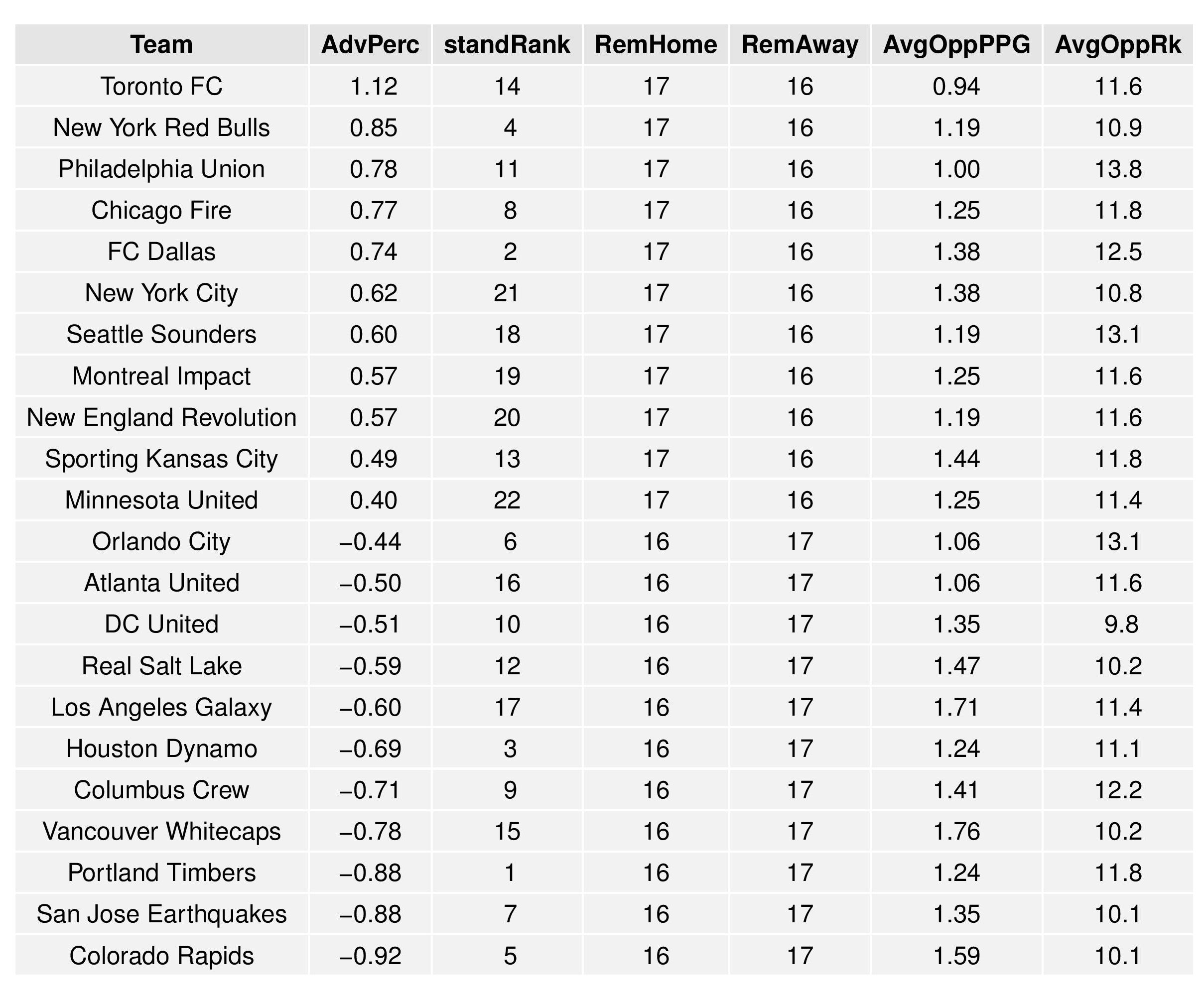
The following shows the expectations for upcoming Philadelphia matches:
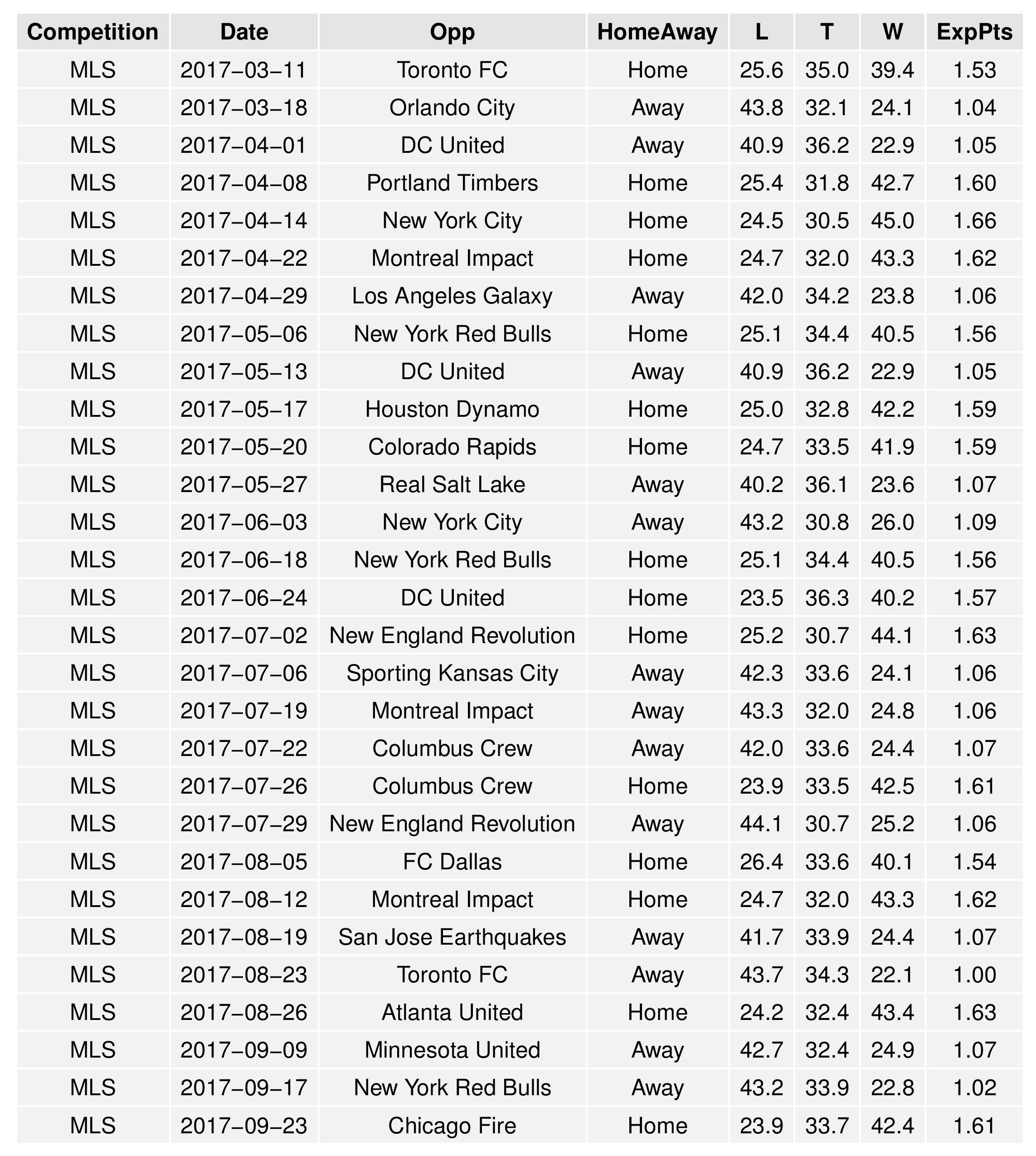
The SEBA Projection System is an acronym for a tortured collection of words in the Statistical Extrapolation Bayesian Analyzer Projection System. Check out the first season’s post to find out how it works (https://phillysoccerpage.net/2017/03/03/2017-initial-seba-projections/)
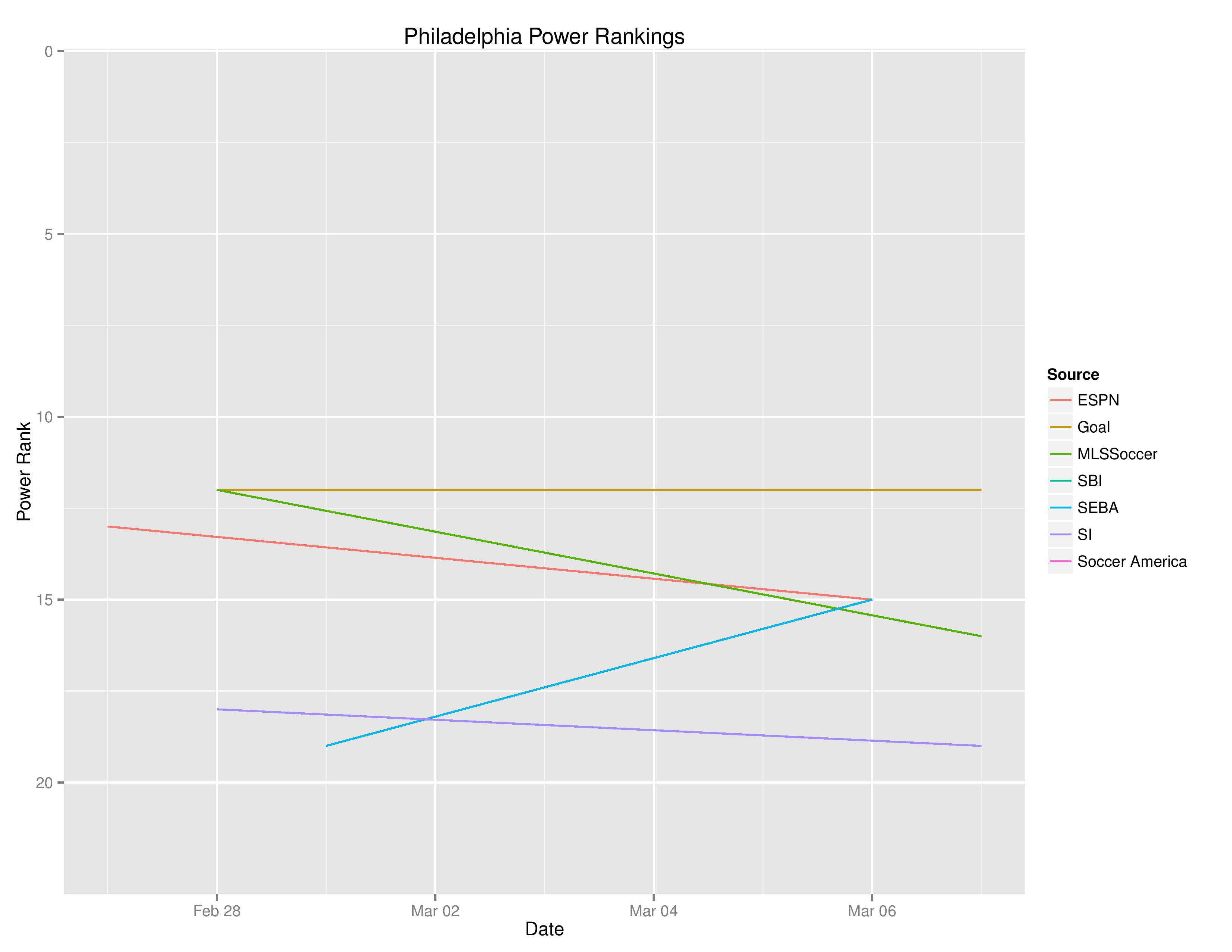
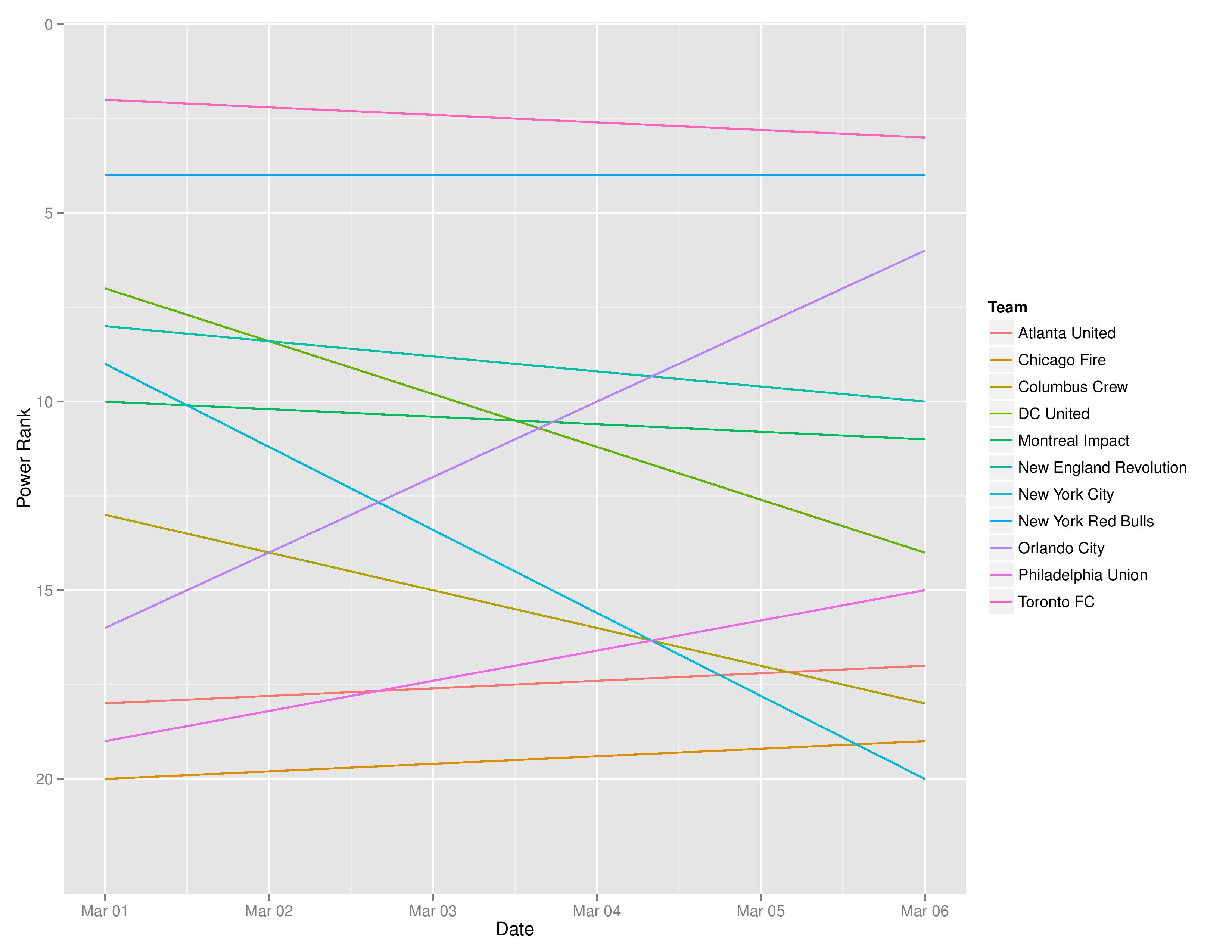
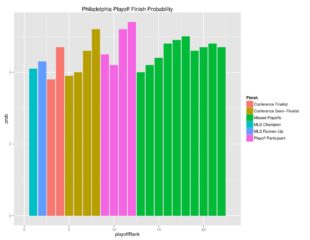

Wow, some pretty big fluctuations there, most notably LA going from 55% chance at making the playoffs to 42%! It’s also interesting how the Union are 7th in the East in the power rankings but 4th in terms of playoff likelihood.
.
Anyone want to speculate whether Orlando’s rise will be followed by a plummet?
I don’t want to answer for Chris, but this is just classic “small sample size”. Based on the way this system is set up (I didn’t really follow it last year, so I’m just going by what I’ve seen so far this year), I’d imagine it will take 8-12 games to really settle down. Until there’s a bigger sample, each game is going to make a big impact.
Adam is correct, early in the season there will likely be some swings as old, 2016 data becomes rapidly less influential than new, 2017 data.
–
Particularly with LA, the model takes a home loss very seriously, knocking their power ranking from 7th to 13th, as home field advantage is one of the few variables with enough evidence to justify bolder predictions this early on. Atlanta also lost at home, but didn’t have as far to go (17th to 18th) and last week’s forecast was basically treating Atlanta as random in the absence of other data.
–
As for Philly’s 7th eastern power rank vs. 4th-best-playoff-odds, this is due to model uncertainty. If you look on the Power Rankings graph, you can see how closely the model distinguishes each other’s strength (which is to say it barely notices). On the other hand, Philadelphia got a point on the road, compared with Montreal and New England’s losses on the road and DC United’s draw at home. For the moment, points-in-hand and home-field-advantage are the driving factor behind most of the model’s season projections, and therefore it makes sense that the Union’s better results would make them a few percentage points higher on the playoff race.
–
In addition to discounting older matches, the data pre-processing also rapidly eliminates the previous season from any consideration at all, so it is possible that Orlando’s power-rank rise (and NYCFC’s fall) also had to do with earlier 2016 matches being excluded from the model, given that their 1-0 home-win would not normally be cause for surprise.
Appreciate the explanations, Chris. Most helpful.
.
Statistics was not taught in the secondary schools I attended 50 and more years ago, and IBM was still making mechanical calculators that took up the entire top of a desk, and I don’t mean a student’s tablet arm.
.
All explanation for a layman is most helpful to this specific corner of the readership. 🙂
What is the probability Union score a goal this season based on that first game?
.
Kidding.